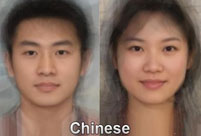 If you like autumn, put your hands in the air!
If you like autumn, put your hands in the air!
 Fan Bingbing's "Queen style" in new play
Fan Bingbing's "Queen style" in new play
 Lingerie show at 2014 Miss China
Lingerie show at 2014 Miss China
 J-10 fighters show aerobatic stunts in smog-free sky
J-10 fighters show aerobatic stunts in smog-free sky
 Charming contestants of Shanghai Int’l Model Contest
Charming contestants of Shanghai Int’l Model Contest
 Most amazing chi-pao beauties
Most amazing chi-pao beauties
 7 deadly animal attacks
7 deadly animal attacks
 Picturesque autumn scenery of Hongshan Army Horse Ranch
Russia to launch 70 Proton rockets by 2020: official
Picturesque autumn scenery of Hongshan Army Horse Ranch
Russia to launch 70 Proton rockets by 2020: officialLocal govts post higher growth figures
The combined GDP of China's 29 provincial-level regions, which as of Monday had all reported their GDP statistics for the first three quarters, reached 46.85 trillion yuan ($7.66 trillion), higher than the central government's national figure of 41.99 trillion yuan for the period, news portal chinanews.com reported on Tuesday.
The national figure is for the whole country, but the regional figure - which does not include Southwest China's Tibet Autonomous Region and Northwest China's Gansu Province - was still 11.6 percent higher than the national one, according to the Global Times' calculations.
Based on chinanews.com's report, among the 29 provincial-level regions across the country, 21 local governments including Tianjin Municipality and Southwest China's Guizhou Province posted year-on-year economic growth for the first three quarters that was faster than the average figure released by the central government of 7.4 percent.
Seven local governments, including Beijing and Shanghai, reported economic growth lower than 7.4 percent in the period.
Only Zhejiang Province posted a growth figure consistent with the national average of 7.4 percent in the first three quarters.
China's GDP increased by 7.3 percent year-on-year in the third quarter, according to data from the National Bureau of Statistics (NBS). It marked the slowest level of growth in nearly six years, indicating that the economy still faces downward pressure, analysts said.
The data reported by provincial-level governments appears to be more optimistic than the national figure, but this does not necessarily mean that local governments inflated the numbers to impress the central government, Zhou Shaopeng, a professor at the Chinese Academy of Governance, told the Global Times on Tuesday.
The discrepancy could be because investments made by cross-regional companies have been included in calculations by more than one local government, Zhou said.
Investment by trans-regional enterprises is likely to be included in GDP data both by the local government in the province where the investment comes from and in the one where it goes to, Zhou noted.
Since 1985, the central and local governments have calculated GDP data separately, and there have always been discrepancies between the regional figure and the national figure.
But amid the downward pressure on China's economy, it's possible that local governments might want to interfere with the statistics to make the figures look better, Zhou said.
Based on the current accounting methods, there is some flexibility for local governments, such as how to count the income of farmers from selling agricultural products.
A new rule released by the Organization Department of the Communist Party of China Central Committee on December 6 said that growth of GDP should not be the only criteria for selection and appointment of officials.
After the release of the new rule, the discrepancy between the local and central GDP figures fell to 3.7 percent in the first quarter this year, but the difference gradually expanded in the ensuing months, the Economic Information Daily reported on Tuesday.
GDP growth may have a lesser role in selection and appointment of officials after the new rule, but it's still an important measurement, Tian Yun, editor-in-chief of the China Macroeconomic Information Network website under the China Society of Macroeconomics, a government think tank, told the Global Times on Tuesday.
Reform in the field of selection and appointment of officials should continue, and more criteria involving environmental damage and pollution should be introduced, Tian said.
 World Pole Dance Championship in China
World Pole Dance Championship in China In pics: PLA stages live-fire drill in NE China
In pics: PLA stages live-fire drill in NE China  Post-85s female pilots and their mission
Post-85s female pilots and their mission Century-old public bath closes door in Beijing
Century-old public bath closes door in Beijing Shocking! Photos of Chinese fighters revealed
Shocking! Photos of Chinese fighters revealed Images of angels in white: At work v.s off work
Images of angels in white: At work v.s off work  Standard faces for each countries in the world
Standard faces for each countries in the world Netizens fall in love with champion swimmer Ning Zetao
Netizens fall in love with champion swimmer Ning Zetao Vibrant 21-year-old and her own Cheongsam brand
Vibrant 21-year-old and her own Cheongsam brand Top 10 most dangerous jobs in the world
Top 10 most dangerous jobs in the world  Top 10 fifth generation jet fighters in the world
Top 10 fifth generation jet fighters in the world Top 10 Chinese goddesses
Top 10 Chinese goddesses  Top 20 hottest women in the world in 2014
Top 20 hottest women in the world in 2014 Top 10 pure beauties in showbiz
Top 10 pure beauties in showbiz  Top 10 world's highest-paid models 2014
Top 10 world's highest-paid models 2014 The most gorgeous Chinese women
The most gorgeous Chinese women Top 10 most handsome faces in Asia
Top 10 most handsome faces in AsiaDay|Week|Month